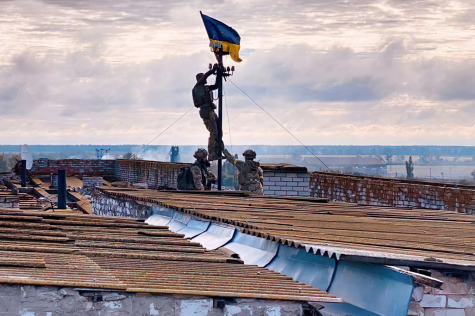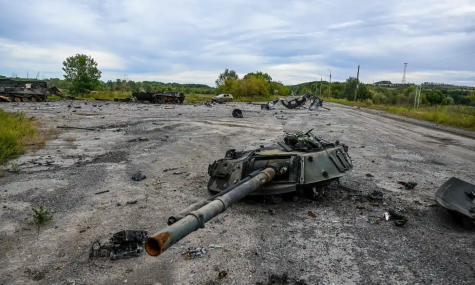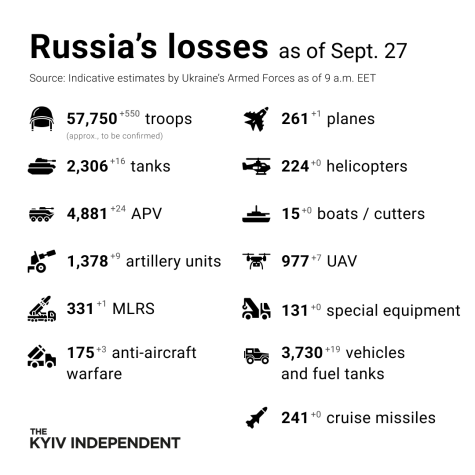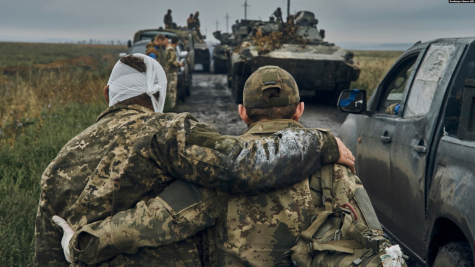Ukraine: The Turning Point

In February, Russia announced a declaration of a “Special Military Operation” to invade Ukraine and occupy over 20% of the country. After six months of occupation by Russian Federation forces in Ukraine, the military called for action to be taken. According to Amnesty International, over 606 civilians had been killed by Russian shelling in the Kharkiv region. On September 6, Ukraine launched a counter-offensive into the Kharkiv Oblast (Region). After staging a feint attack near Southern Ukraine, Ukrainian army forces concentrated around Balakliya and began the offensive on the region. In less than two days, Ukrainian army forces took over 970 square miles of land–nearly double the size of LA–liberating towns and villages. They pushed Russian forces to the original borders in the northern regions of Ukraine.

This retreat of Russian troops led to the destruction of the 1st Guards Tank Army, which is one of Russia’s best-equipped tank units with modern T-90s tanks that were captured and allegedly sent to US Intelligence. Analysts pointed out that Russia had not lost battalion-sized units on this scale since World War II. Mounting pressure on the Russian government facing these losses may lead to desperate measures being taken in Russia and Ukraine.
“In the event of a threat to the territorial integrity of our country and to defend Russia and our people, we will certainly make use of all weapon systems available to us,” remarked Vladimir Putin in one of his latest addresses on television about the state of the war.
Putin later again threatened nuclear force in Ukraine after hearing the setbacks of the war in his most fiery address yet. US Officials warned him against nuclear escalation in a statement by Jake Sullivan, the U.S. National Security Advisor, according to The Week.
“If Russia crosses this line, there will be catastrophic consequences for Russia. The United States will respond decisively,” Sullivan said. Co
ming after Putin announced the mobilization of Russia for the third time in history.
Sullivan, one of many military analysts, is calling this the turning point in the war in Ukraine. Many others agreed after the destruction of one of Russia’s best-equipped units defending the northern region. Analysts realized the door to Moscow was opened after being defended by little to no reserves, which means Ukraine now has the option to invade Russia. Invasion was suspected as the reason for the war being started, one of Russia’s biggest fears. This led to Putin calling for mobilization after many setbacks throughout the war.
“I think it is necessary to support the proposal… …to conduct a partial military mobilization…” said Vladimir Putin on September 21st in a televised address on NTV.

Putin called for 300,000 reserve military personnel to be conscripted into what Russian soldiers are calling “The Meat Grinder of Ukraine.” Casualties for the Russians are now mounting from 50,000 to nearly 60,000 according to The Kyiv Independent and the U.S. Department of Defense. Along with countless losses of military equipment and vehicles in the thousands. Many Russian military officials now realize they cannot replace these losses thanks to sanctions placed on Russia. Ukraine is slowly getting the material advantage in the ongoing conflict thanks to lended equipment from NATO countries.
Many Ukrainians feel the war is not over by a long shot, but still feel the morale boost from liberated towns. As reported on Twitter, General Zaluzhny of the Ukraine army expressed some of the feelings by saying, “We finished the Russian professional army, and now it’s time to defeat [the] unprofessional.”
Although historians and analysts typically do not like to call a point in history a turning point, the details of this event has many calling it a turning point in this war for Ukraine. Still, the feeling of uncertainty remains for those in the war and out of it. Russian desperation is mounting and unrest from the mobilization has many protesting the war. The power balance and future of Ukraine and Russia, as well as Europe overall, hangs in this war.

Hanna • Oct 28, 2022 at 9:36 am
Thank you for this important update.